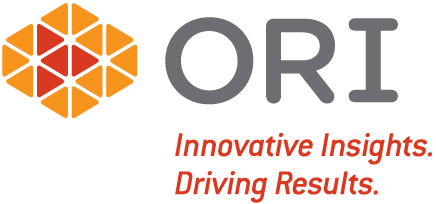What Is Systematic Listening?
How to Apply a Systematic Approach to the Voice of the Customer
By Jay Yeo, Consultant, ORI
There is no shortage of statistics telling us that customer experience (CX) and, therefore, the voice of the customer (VOC) are crucial to organizational success. The numbers speak for themselves:
- 68% of customers leave because of poor CX
- 1 happy customer equals 9 referrals
- For every $1 invested in CX, businesses generate $3 in return
- Acquiring a new customer can cost 5 times more than retaining an existing customer*
- Increasing customer retention by 5% can boost profits by 25% to 95%*
- The success rate of selling to an existing customer is 60% to 70%, while the success rate of selling to a new customer is 5% to 20%*
(*Source: Customer Acquisition vs. Retention Costs – Statistics & Trends)
While there are plenty of statistics demonstrating the value of listening to customers, it is not always clear how to do it. Listening to the customer requires both a systematic and comprehensive approach—systematic to ensure consistency and regularity, and comprehensive to ensure there are no unintentional blind spots that skew analyses and leave customers by the wayside. In order to accomplish both, there are three primary areas of VOC analysis to consider.
1. Using All Sources of Data
Many organizations collect multiple types of data from their customers: transactions, surveys, social media, chats, calls, marketing campaign click rates, and more. ![]() However, these different sources are often analyzed discretely and, in the face of counterintuitive or misaligned conclusions and recommendations between sources, only one may be used to make a decision. For example, a survey may indicate that Feature A is the reason customers bought a product, but social media may suggest that customers are most excited about Feature B. Meanwhile, marketing data may show higher purchase rates for customers who saw an advertisement highlighting Feature C. Which data do you listen to? What is it telling you about your customer? And where do you go from here?
However, these different sources are often analyzed discretely and, in the face of counterintuitive or misaligned conclusions and recommendations between sources, only one may be used to make a decision. For example, a survey may indicate that Feature A is the reason customers bought a product, but social media may suggest that customers are most excited about Feature B. Meanwhile, marketing data may show higher purchase rates for customers who saw an advertisement highlighting Feature C. Which data do you listen to? What is it telling you about your customer? And where do you go from here?
Each of these data sources contains valuable information. But until a more comprehensive picture is compiled to show why and how customers are making decisions to reveal the underlying reasons for seemingly conflicting conclusions, organizations are stuck making decisions based on only one lens of customers—and potentially only one segment. An organization’s data is most valuable when its multiple sources can be analyzed together to gain a fuller, 360-degree view of the customer. This avoids leaving groups of customers out of the conversation and promotes alignment across departments for a more coordinated approach to achieving organizational goals.
2. Breaking Down Silos
An issue closely related to analyzing all sources of data is eliminating data silos. ![]() In order to analyze all data sources, organizations must first be able to access the multiple sources and compile the data together. To do so, they must have the infrastructure to house multiple data sources—such as a data warehouse or data lake—to enable easy access, combination, and extraction of data.
In order to analyze all data sources, organizations must first be able to access the multiple sources and compile the data together. To do so, they must have the infrastructure to house multiple data sources—such as a data warehouse or data lake—to enable easy access, combination, and extraction of data.
Another hurdle in overcoming data silos is organizational culture. Data silos often form when different departments or components of an organization operate independently from one another and have very little communication. They also tend to form when upper management limits access or permissions to lower-level employees beyond necessity. By addressing the underlying structural issues, organizations can break down silos and more effectively gather all sources of data together for a comprehensive view of the customer. (For more on data silos and how to dismantle them, read How to Overcome Data Silos to Strengthen Customer Experience.) Breaking down data silos to gain access to an organization’s diverse data sources is a key step in analyzing all data sources together.
3. Utilizing Customers’ Native Expressions of Feedback
Before the advent of text analytics software, ![]() organizations had to rely on simple survey questions with numeric scaled responses (so-called “structured” questions) to capture customer feedback about effort, likes and dislikes, and pain points. While such questions provide some insight, they fall short in several key areas, which can undermine an organization’s ability to truly listen to its customers:
organizations had to rely on simple survey questions with numeric scaled responses (so-called “structured” questions) to capture customer feedback about effort, likes and dislikes, and pain points. While such questions provide some insight, they fall short in several key areas, which can undermine an organization’s ability to truly listen to its customers:
Limited Number of Response Options
Structured questions that ask respondents to select an answer from a limited number of responses force respondents to pick the best option—even if it does not fit their answer or fully capture their intended response.
Loss of Depth & Nuance
Similarly, structured questions do not capture specific reasons and instead tend to bucket related responses together into general categories. The broad nature of these categories makes it difficult to derive insights that are specific enough to inform decisions and drive action.
Prioritizing the Organization’s Agenda Over Customer Concerns
Trying to peer into customers’ underlying thoughts via structured questions requires prompts that often force respondents to reframe their thoughts to match those areas that are of interest to the organization—not to surface what is top of mind to the customers. This causes organizations to miss the things that are most important to customers as well as their thoughts about them.
Instead of falling into these traps, organizations should aim to capture and analyze customers’ native expressions of their feedback—a practice that has become more efficient, affordable, and valuable with the help of advanced text analytics software. This data may come in the form of open-ended feedback in surveys, calls, online chat forums, reviews and ratings sites, social media, and more. Such analysis avoids the pitfalls of relying solely on structured questions while allowing companies to identify the areas that are most important to customers, what they are saying about them, and why. In other words, the foundation of listening to the voice of the customer.
For example, one of ORI’s clients had multiple years’ worth of post-course feedback from its largest revenue driver. The client wanted to know how it could improve the course, particularly to combat increasing competition from other organizations. Although the client had looked at satisfaction scores and some responses to closed-ended questions, none of these answered the key question. But by analyzing the open-ended commentary along with the closed-ended responses, ORI was able to identify a systemic problem that was affecting all participants across all aspects of the course—something that the organization had not thought to ask about before. The analysis also revealed a desire and enthusiasm for hands-on teaching methods and case studies. This insight allowed the organization to address any recurrent concerns about the course and make adjustments to the content, structure, and teaching style to better meet participants’ needs. (Read the case study: Large Healthcare Association Translates Customer Commentary into Industry Leadership, Renewals & Revenue.)
Finally, sharing the results of systematic listening efforts and success stories across the organization further bolsters an organizational orientation to the customer, promotes the sharing of ideas, and prevents departments or segments from resurrecting old silo walls. By adding the system to “systematic listening,” organizations can build upon their efforts within and across departments to place the customer at the center of the conversation and ensure alignment to shared goals and strategy.












